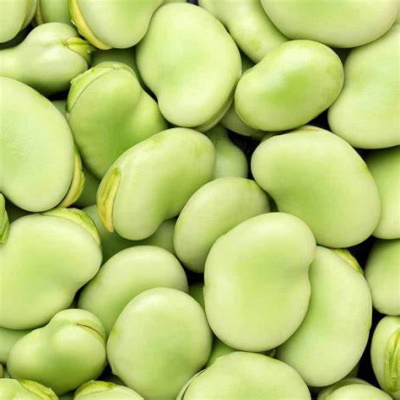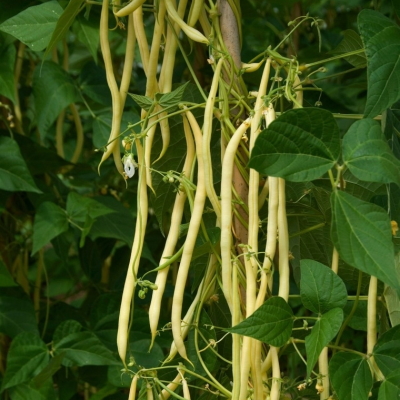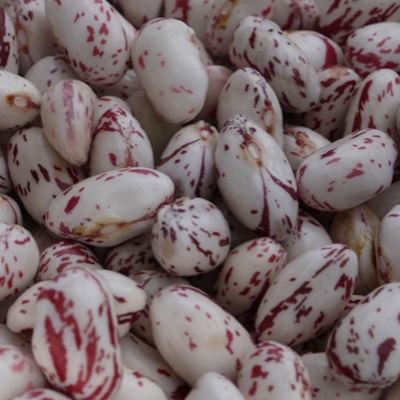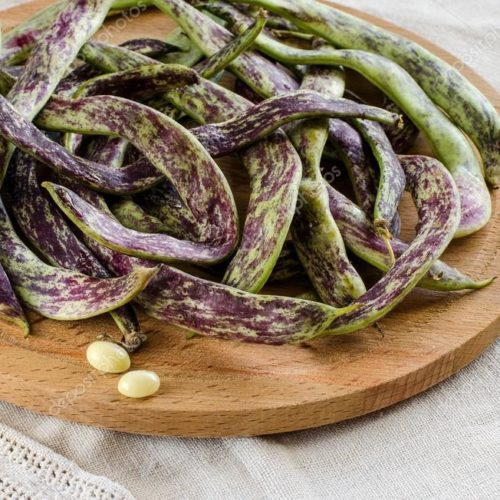-
Out of stock
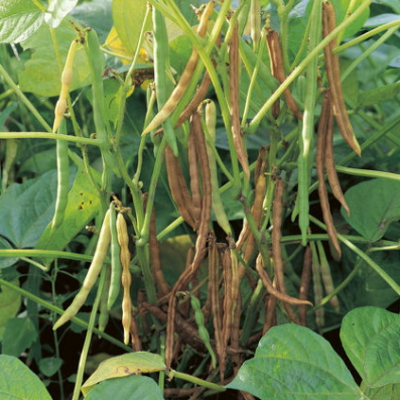
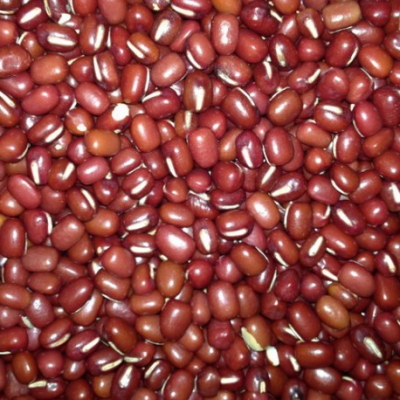 This bean needs a longer growing period so start these indoors in mid-May to early-June. These are ancient Asian legumes, commonly grown as a pulse or dried bean but also sometimes used fresh. They have been cultivated for centuries in China and Japan as well as other countries in the East. The plant itself grows 30-60 cm in height, producing yellow flowers followed by clusters of pods. Young tender pods can be picked early and used much as you would use snap peas. These beans are excellent for container growing but they enrich the soil significantly so you may want to sow them outdoors in beds or your main garden area. Adzuki beans are linked to several health benefits, ranging from heart health and weight loss to improved digestion and a lower risk of diabetes. An average plant can produce up to 120 pods.
This bean needs a longer growing period so start these indoors in mid-May to early-June. These are ancient Asian legumes, commonly grown as a pulse or dried bean but also sometimes used fresh. They have been cultivated for centuries in China and Japan as well as other countries in the East. The plant itself grows 30-60 cm in height, producing yellow flowers followed by clusters of pods. Young tender pods can be picked early and used much as you would use snap peas. These beans are excellent for container growing but they enrich the soil significantly so you may want to sow them outdoors in beds or your main garden area. Adzuki beans are linked to several health benefits, ranging from heart health and weight loss to improved digestion and a lower risk of diabetes. An average plant can produce up to 120 pods. -
Out of stock
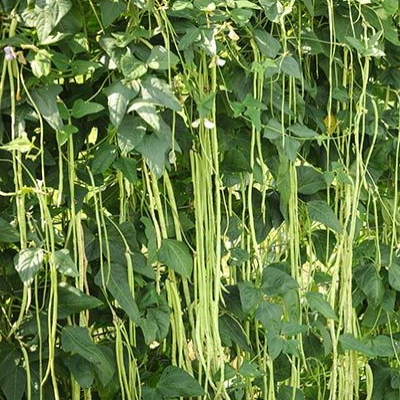 Start by sowing the seeds one to two inches deep, with a space of three to four inches between plants. The use of a low tunnel for the first month of growing (Until June 20th) will help in the production of these lovely tender beans. The Yard Long can tolerate acidic soils and will require full sun. Water them often so that they don’t wilt in the sun. Due to the nature of a vine, support, such as a trellis, will be needed. Pods grow long and slightly heavy, so they will need strong support. The pods take two to three months to reach maturity, at which point they should be anywhere from 25-80 cm long. you will want to start picking them when they are 20-25 cm long. Once pods begin to reach this size, they should be harvested each day to encourage production on the vine.
Start by sowing the seeds one to two inches deep, with a space of three to four inches between plants. The use of a low tunnel for the first month of growing (Until June 20th) will help in the production of these lovely tender beans. The Yard Long can tolerate acidic soils and will require full sun. Water them often so that they don’t wilt in the sun. Due to the nature of a vine, support, such as a trellis, will be needed. Pods grow long and slightly heavy, so they will need strong support. The pods take two to three months to reach maturity, at which point they should be anywhere from 25-80 cm long. you will want to start picking them when they are 20-25 cm long. Once pods begin to reach this size, they should be harvested each day to encourage production on the vine. -
Out of stock
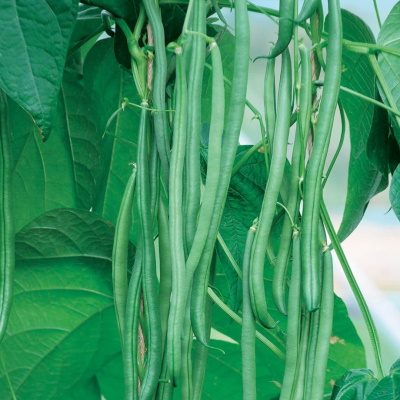 Fortex Filet This stringless French pole bean produces exceptionally long, medium-green pods that grow to over 27 cm. Fortex can also be harvested at 15-20cm for extra slender filet beans. The delicate, sweet flavour is wonderful served fresh or frozen. Fortex filet pole bean seeds produce vigorous climbing vines that require the support of a trellis or pole. Picked fresh, these beans are sweet, crunchy, and have a succulent texture and a flavour that will earn them a spot in the garden every season. It has been a best-selling customer favourite for years. Matures in 70 days.
Fortex Filet This stringless French pole bean produces exceptionally long, medium-green pods that grow to over 27 cm. Fortex can also be harvested at 15-20cm for extra slender filet beans. The delicate, sweet flavour is wonderful served fresh or frozen. Fortex filet pole bean seeds produce vigorous climbing vines that require the support of a trellis or pole. Picked fresh, these beans are sweet, crunchy, and have a succulent texture and a flavour that will earn them a spot in the garden every season. It has been a best-selling customer favourite for years. Matures in 70 days. -
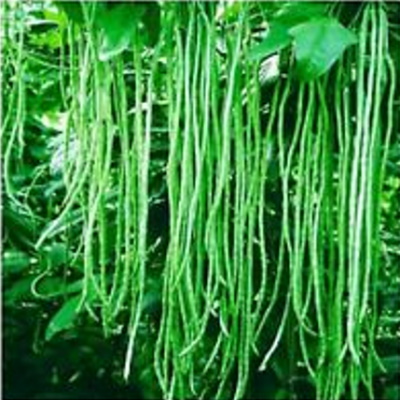 Asparagus Bean seeds are also known as yard-long beans. This attractive plant is botanically different from regular pole beans and bears the tongue-twisting Latin name Vigna unguiculata sesquipidalis. At first, this plant appears to grow as a bush, but when the summer heat comes along, it bursts into vertical growth with twisting vines, and purple flowers, followed by fast-growing pods that are meant to be harvested at 60-65cm (24-26”) in length. Even at that amazing size, the beans are just over 1cm (½”) thick, tender, and tasty. These beans feature prominently in Asian cuisines and are most productive in hot weather. Start indoors mid-spring, and transplant as soon as the soil warms up at the solstice.
Asparagus Bean seeds are also known as yard-long beans. This attractive plant is botanically different from regular pole beans and bears the tongue-twisting Latin name Vigna unguiculata sesquipidalis. At first, this plant appears to grow as a bush, but when the summer heat comes along, it bursts into vertical growth with twisting vines, and purple flowers, followed by fast-growing pods that are meant to be harvested at 60-65cm (24-26”) in length. Even at that amazing size, the beans are just over 1cm (½”) thick, tender, and tasty. These beans feature prominently in Asian cuisines and are most productive in hot weather. Start indoors mid-spring, and transplant as soon as the soil warms up at the solstice. -
Out of stock
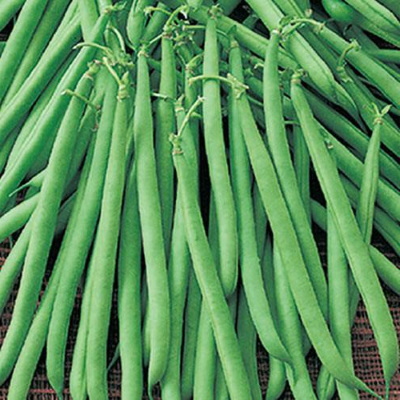 Maxibel is unsurpassed in flavour and great for fresh market gardeners. Straight, dark-green filet bean pods are stringless and about 18cm long on sturdy bush plants. Maxibel Filet bush bean seeds produce plants that yield in a huge but concentrated harvest. This is an excellent choice for multiple spring sowings – stagger planting times and sow short rows every two to three weeks. This will result in a much longer harvest window. Try growing Maxibel bush beans in larger containers like half barrels or grow bags. They work very well in raised beds, too.
Maxibel is unsurpassed in flavour and great for fresh market gardeners. Straight, dark-green filet bean pods are stringless and about 18cm long on sturdy bush plants. Maxibel Filet bush bean seeds produce plants that yield in a huge but concentrated harvest. This is an excellent choice for multiple spring sowings – stagger planting times and sow short rows every two to three weeks. This will result in a much longer harvest window. Try growing Maxibel bush beans in larger containers like half barrels or grow bags. They work very well in raised beds, too. -
Out of stock
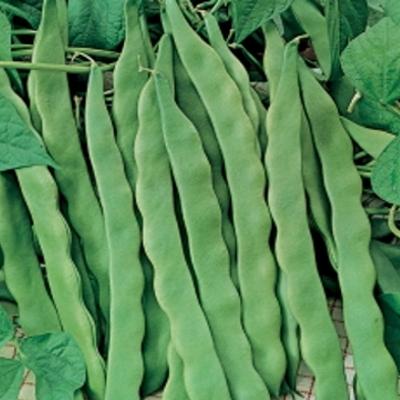 One bite of this gourmet French climbing bean and your mind will be made up: Algarve must become a permanent part of your veggie patch and 3 Sisters planting! The flavour is fabulous and very sweet. The yields huge, and the harvests earlier than most others. 50 days from sowing to harvest. Grow this in a high tunnel greenhouse or outdoors.
One bite of this gourmet French climbing bean and your mind will be made up: Algarve must become a permanent part of your veggie patch and 3 Sisters planting! The flavour is fabulous and very sweet. The yields huge, and the harvests earlier than most others. 50 days from sowing to harvest. Grow this in a high tunnel greenhouse or outdoors. -
Out of stock
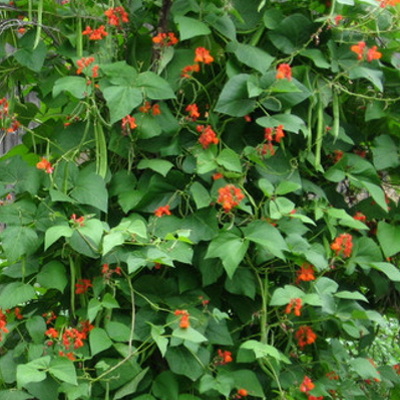 These seeds can be sown indoors by placing them two inches deep in potted soil, and transplanted outside after seven to ten weeks, when the threat of frost has passed. Conversely, you may sow them directly outdoors by placing them 5 cm deep in the soil, 22-25 inches apart, and with 45 cm between rows. Because these seeds will grow in a vine, they will need a support trellis, such as a cane or frame. It is best for the roots to put your frame in place when you plant as these vines grow quickly. Regular watering is required, and these vines will grow to impressive lengths in a relatively brief period of time. 3-4 Meter vines are covered in attractive red blossoms borne in clusters. The more you pick, the more they produce. Most should bear pods from late July and harvest can continue until the first frosts, or longer if plants are protected. Beans are at their best when fresh, young, and tender. They should be harvested when the pods are thin, snap easily, and while the seeds are still small and pale in colour. Picking green beans often help to promote more growth and increase yields. As the pods get older they develop string and the pod-walls become more fibrous, with pronounced bumps on the surface indicating that the seeds are enlarging and that moisture is going into the seed from the pod.
These seeds can be sown indoors by placing them two inches deep in potted soil, and transplanted outside after seven to ten weeks, when the threat of frost has passed. Conversely, you may sow them directly outdoors by placing them 5 cm deep in the soil, 22-25 inches apart, and with 45 cm between rows. Because these seeds will grow in a vine, they will need a support trellis, such as a cane or frame. It is best for the roots to put your frame in place when you plant as these vines grow quickly. Regular watering is required, and these vines will grow to impressive lengths in a relatively brief period of time. 3-4 Meter vines are covered in attractive red blossoms borne in clusters. The more you pick, the more they produce. Most should bear pods from late July and harvest can continue until the first frosts, or longer if plants are protected. Beans are at their best when fresh, young, and tender. They should be harvested when the pods are thin, snap easily, and while the seeds are still small and pale in colour. Picking green beans often help to promote more growth and increase yields. As the pods get older they develop string and the pod-walls become more fibrous, with pronounced bumps on the surface indicating that the seeds are enlarging and that moisture is going into the seed from the pod. -
Out of stock
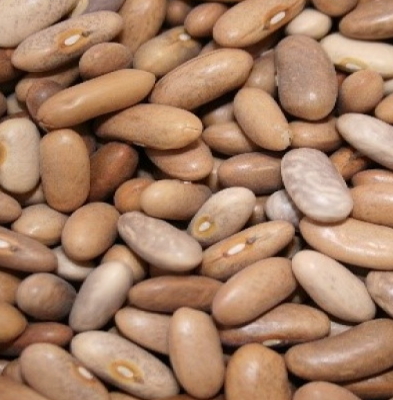
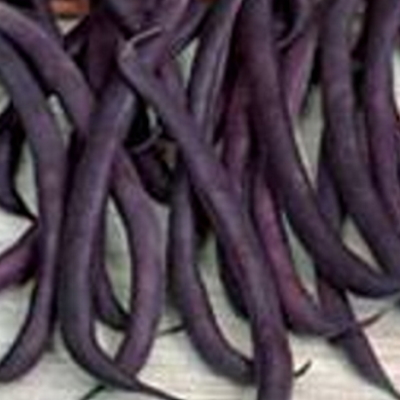 Royal Burgundy produces an unusual dark purple podded bean, though pods turn dark green when cooked. Enjoy an abundant yield of tender and delicious stringless beans. These beans are excellent when used either fresh or frozen. Tip: pick beans when they are about 10 cm long. Can be steamed, sauteed, baked, or used in recipes in place of French Green Beans.
Royal Burgundy produces an unusual dark purple podded bean, though pods turn dark green when cooked. Enjoy an abundant yield of tender and delicious stringless beans. These beans are excellent when used either fresh or frozen. Tip: pick beans when they are about 10 cm long. Can be steamed, sauteed, baked, or used in recipes in place of French Green Beans. -
Out of stock
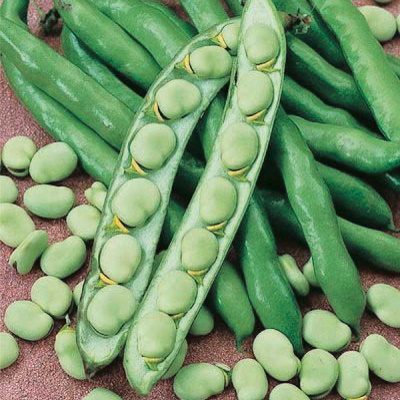 Heritage variety-Broad Windsor beans are prolific yielders. Plants produce long 15-20 cm pods with 4-6 large, flat beans inside. This variety is also tolerant of frost and has fragrant flowers. Sow seeds when the soil is warm and all danger of frost is past. Pick early and often to encourage production. Pick when plump and cook like peas or lima beans. This large variety will fix nitrogen in your soil, so it’s perfect for planting in the fall, harvesting in the spring, and following with nitrogen-loving crops like Brassicas, lettuce, or spinach. Fresh or dried, broad beans must be cooked before eating in order to rid them of potentially toxic alkaloids. The young, tender leaves can be eaten raw, or cooked like spinach. Broad beans are one of the world’s most ancient and widespread food crops.
Heritage variety-Broad Windsor beans are prolific yielders. Plants produce long 15-20 cm pods with 4-6 large, flat beans inside. This variety is also tolerant of frost and has fragrant flowers. Sow seeds when the soil is warm and all danger of frost is past. Pick early and often to encourage production. Pick when plump and cook like peas or lima beans. This large variety will fix nitrogen in your soil, so it’s perfect for planting in the fall, harvesting in the spring, and following with nitrogen-loving crops like Brassicas, lettuce, or spinach. Fresh or dried, broad beans must be cooked before eating in order to rid them of potentially toxic alkaloids. The young, tender leaves can be eaten raw, or cooked like spinach. Broad beans are one of the world’s most ancient and widespread food crops. -
Out of stock
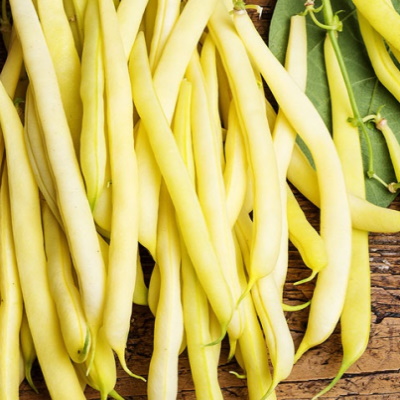 This variety produces early yellow wax beans that are 12-15 cm long. They are slender straight yellow pods that hang in clusters on strong compact dark green bushy plants. Average plant height 42-54 cm with a spread that is 38-51 cm wide. Wax beans have a pleasant, mild flavour and make a lovely change from regular green beans. Excellent for freezing. Maturity of 54 days.
This variety produces early yellow wax beans that are 12-15 cm long. They are slender straight yellow pods that hang in clusters on strong compact dark green bushy plants. Average plant height 42-54 cm with a spread that is 38-51 cm wide. Wax beans have a pleasant, mild flavour and make a lovely change from regular green beans. Excellent for freezing. Maturity of 54 days. -
Out of stock
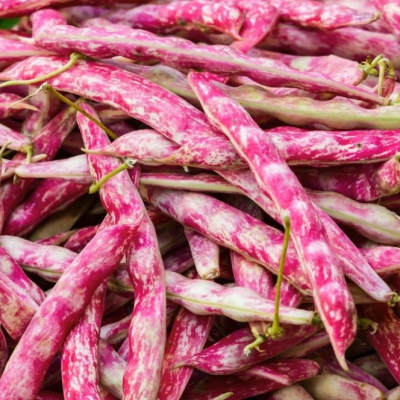 Open Pollinated. Semi-runner pole type plant produces good yields of 21 cm long green beans. Good shelling and drying variety. An excellent choice for home gardens.
Open Pollinated. Semi-runner pole type plant produces good yields of 21 cm long green beans. Good shelling and drying variety. An excellent choice for home gardens. -
Out of stock
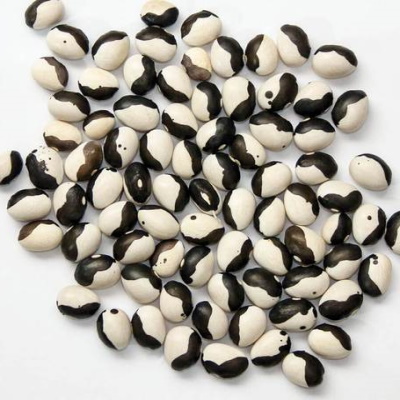 Also known as Orca drying bean. This unusual bi-coloured Mexican heirloom has a creamy texture when cooked, and it looks great on the plate. The plants are relatively compact bushes, growing to only 45cm (18”) tall. The beans are easy to grow and fun to harvest. Plant some Calypso bean seeds in the organic vegetable garden and enjoy the dried beans in soups and stews all winter long. The open-pollinated seeds are easy to harvest and dry for planting the following year.
Also known as Orca drying bean. This unusual bi-coloured Mexican heirloom has a creamy texture when cooked, and it looks great on the plate. The plants are relatively compact bushes, growing to only 45cm (18”) tall. The beans are easy to grow and fun to harvest. Plant some Calypso bean seeds in the organic vegetable garden and enjoy the dried beans in soups and stews all winter long. The open-pollinated seeds are easy to harvest and dry for planting the following year.
